The first Fraser River sockeye salmon returns have been unexpectedly high so far this year, significantly surpassing pre-season forecasts, yet experts remain cautiously optimistic as they wait to find out how many salmon successfully spawn.
As of July 29, 734,400 Early Stuart sockeye had already passed through the lower Fraser River, starting a 1,200-kilometre journey to their spawning grounds near Fort St. James, B.C.
It’s welcome news for a population that has struggled in recent years. In 2024, only 26 Early Stuart sockeye successfully spawned.
“Initial signs are very encouraging for the early Stuart this year,” says Jason Hwang, Chief Program Officer and Vice President of Salmon, Pacific Salmon Foundation. “Despite the challenges that salmon are facing from climate change, these numbers show the resiliency of salmon and their ability to bounce back when we support rebuilding efforts.”
However, these salmon will likely encounter major migration challenges on their long journey upstream, such as low flows and above average water temperatures. The Pacific Salmon Commission currently estimates that as many as 470,000 – or 65 per cent of the predicted return of Early Stuart sockeye – could die before reaching their spawning grounds.
Nevertheless, more than 691,000 fish from this population is incredibly hopeful news considering they had recently been recommended for listing as Endangered by the Committee on the Status of Endangered Wildlife in Canada.
Production similar to 1970s
The 2025 Early Stuart sockeye run is the largest since 1997 and represents productivity levels similar to the 1970s. Accordingly, the Pacific Salmon Commission has updated its in-season estimate for this run from 116,000 to 725,000 fish.
The Early Stuarts, named because they spawn in the Stuart River system northwest of Prince George, are one of four distinct run timing groups of Fraser sockeye with the remaining groups still left to begin their upstream migrations.
It’s too early to determine exactly why the early Stuart sockeye run is so high this year.
Some scientists are pointing to favourable cooler ocean conditions due to an unusual three-year La Niña weather pattern between 2020 and 2023, others to the removal of fish farms in the Discovery Islands along Fraser sockeye’s migration route.
It is, however, worth keeping in mind that the total number of Fraser sockeye returns this year remains far below the historical average. Around 3 million sockeye are expected in 2025. Historically, for this cycle line around 8 million returned on average to the Fraser system.
Diversity Matters! The early Stuart sockeye group consists of more than 40 distinct populations that spawn in the Stuart River system. They enter the Fraser River at different times from late June to mid-July and because of the different timing and different spawning locations, the overall group has a better chance of surviving en route threats.
Challenges on migration route
Pacific salmon stop feeding when they enter the river and use all their remaining energy to reach their natal spawning grounds, so even a small change to river conditions can impact how many fish successfully spawn.
In recent years, drought, rising river temperatures, earlier snowmelt, wildfires, and landslides have all impacted returning Fraser sockeye and have been occurring with increased frequency. Currently, the Fraser River is about 1.9 degrees above average, which is likely to be unfavourable for returning fish.
Natural disasters like the Chilcotin or Big Bar landslides can also be devastating to salmon.
Only 26 early Stuart sockeye successfully spawned last year because the previous generation were all but unable to reach their spawning grounds due to the Big Bar landslide.
Monitoring early Stuart sockeye is key to their recovery and building their resilience.
“It’s going to take all of us to rebuild Fraser sockeye. It’s moments like this, when we see a surprising return from a depressed population, that really brings to light the value in improving conditions for migration to increase spawning success,” says Hwang.
Watching for record-breaking pink salmon returns
The Fraser River could experience an unprecedented volume of pink salmon in late summer and early fall.
The Pacific Salmon Commission forecasts 27 million pink salmon returning to the Fraser, which would be a record, although there are some early indications that the number might not be quite as high as predicted.
Pink salmon return to the Fraser River in odd years in late August and September. Pacific Salmon Foundation’s Salmon Spotting map is a great resource to find places near you to spot returning pink salmon.
For more information on the State of Salmon in B.C. and the Yukon visit stateofsalmon.psf.ca.


